All About Mourning Dove Eggs and Baby Mourning Doves
Updated: May 03, 2024
We share the answers to the most common questions about mourning dove eggs and baby mourning doves, including when they leave the nest.
On This Page
What Do Mourning Dove Eggs Look Like?
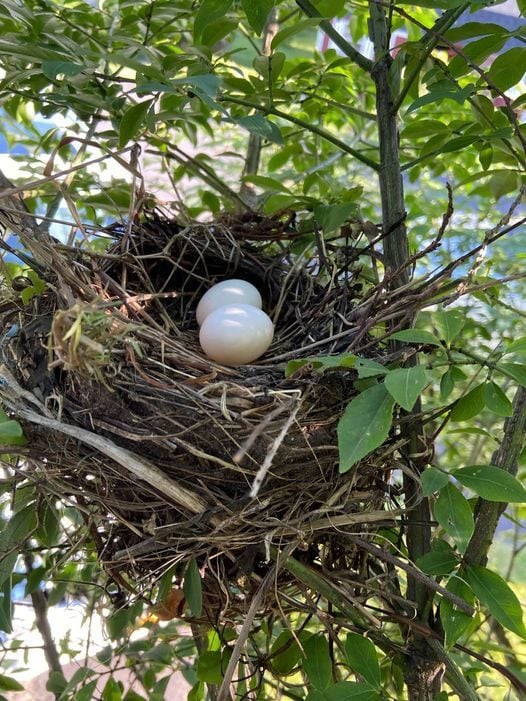
A female adult mourning dove lays two plain, white, nondescript eggs per clutch. The parents may go on to have up to five or six broods of baby mourning doves in one season.
How Long Does It Take for Mourning Dove Eggs to Hatch?

Birding experts Kenn and Kimberly Kaufman say, “Mourning doves often choose protected spots on the ledges of houses for their twiggy nests. After the pair finishes building the nest—which takes two to four days—the female usually lays the first egg within a couple of days, and a second egg a day or two later. Both parents will take turns incubating the two eggs. The eggs hatch after 14 days.”
Learn how to identify bird eggs by color and size.
What Does a Baby Mourning Dove Look Like?

After hatching, a baby mourning dove’s eyes are closed and it is helpless, relying on its parents for warmth. The hatchling dove is covered in an ivory-colored down material. By two weeks old, the young have grown significantly and are sporting fluffy feathers.
See beautiful pictures of mourning doves.
What Do Baby Mourning Doves Eat?
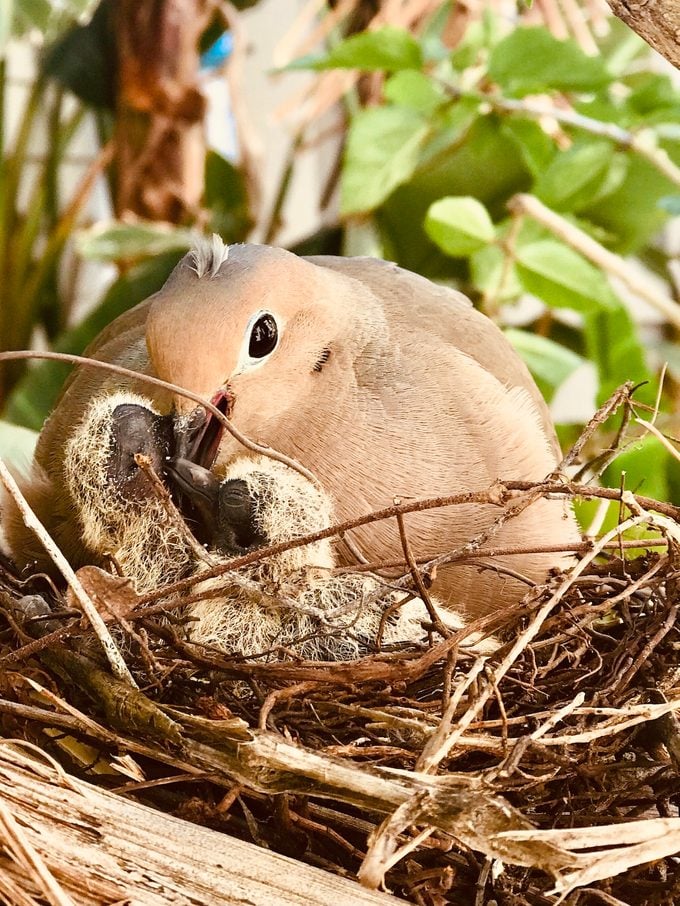
Male and female adults produce “crop milk,” an antioxidant-rich liquid secreted in their throats. The milk is also high in fat and protein. Both parents feed this milky substance to the young while they are still in the nest. Eventually, their diet transitions to seeds, an adult mourning dove’s main source of food.
Do mourning dove feathers and wings make noise?
When Do Baby Mourning Doves Leave the Nest?
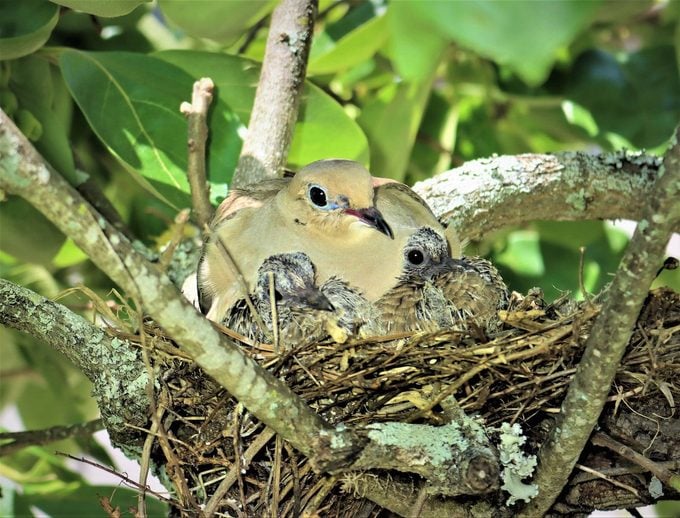
Baby mourning doves are ready to fly and leave the nest when they are about two weeks old, but they stay close to their parents and continue to be fed by them for another week or two.
What does a mourning dove call sound like?
What Does a Fledgling Mourning Dove Look Like?
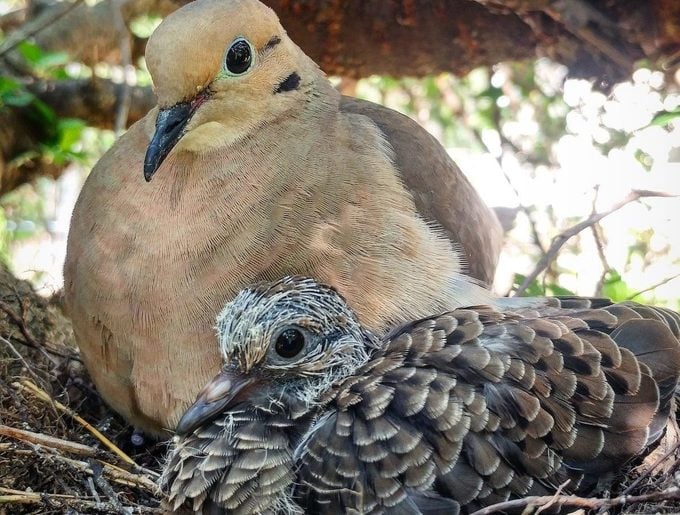
A juvenile mourning dove has white markings on its face. It looks very similar to adults in the body but has white spots at the tips of the feathers.
Check out more super cute pictures of baby birds. You might be interested in knowing if seeing a mourning bird means something, too.
What Should I Do if I Find a Baby Mourning Dove on the Ground?
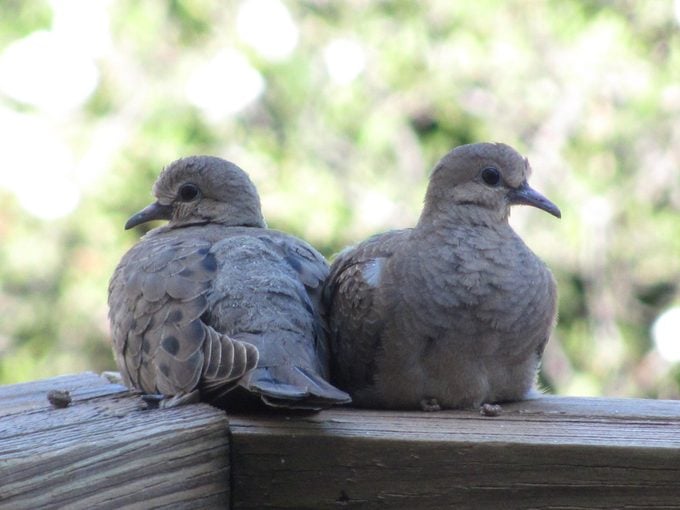
When you find a baby mourning dove, or any abandoned baby bird, on the ground, it’s important to first determine what stage its in. (Learn how to tell the difference between a nestling and fledgling.) If it’s a nestling and its nest is nearby, simply place the bird back in the nest. If the bird is older, in fledgling stage, it’s likely not abandoned—one or both parents are probably nearby—and it’s best to leave the bird where it is.
Next, learn how to identify a white-winged dove and a Eurasian collared-dove.




















